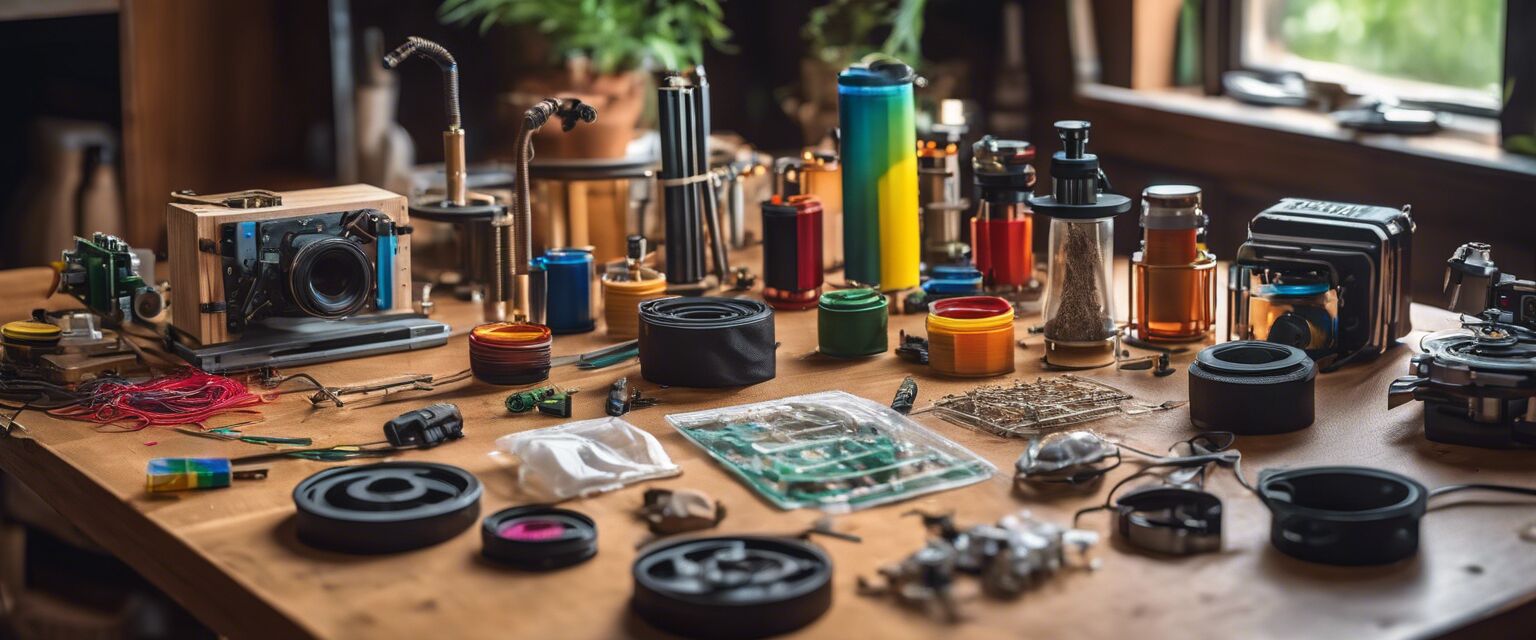

DIY STEM Kits
Key Takeaways
- STEM kits provide hands-on learning experiences for various age groups.
- Encourages creativity, critical thinking, and problem-solving skills.
- Available in various themes, including robotics, engineering, and science experiments.
- Easy to follow instructions make them perfect for at-home learning.
- Fun activities can be enjoyed alone or with friends and family.
DIY STEM (Science, Technology, Engineering, and Mathematics) kits are a fantastic way to engage students of all ages in hands-on learning. With a plethora of options available, these kits encourage creativity, critical thinking, and problem-solving skills while providing a fun and interactive learning experience. Whether you are a parent looking to supplement your child's education or a teacher aiming to inspire your students, DIY STEM kits offer countless opportunities for exploring different concepts in an engaging way.
What is a STEM Kit?
A STEM kit typically includes all the necessary materials and instructions needed to complete various projects related to science, technology, engineering, and mathematics. These kits often focus on creating a project that demonstrates key concepts in a fun and interactive way.
Types of DIY STEM Kits
- Robotics Kits: Teach the basics of robotics and programming.
- Engineering Kits: Focus on building structures or vehicles.
- Science Kits: Includes chemistry experiments and physics projects.
- Art and STEM Kits: Combine artistic creativity with scientific principles.
Benefits of DIY STEM Kits
| Benefit | Description |
|---|---|
| Enhances Learning | Hands-on projects help in understanding complex concepts. |
| Promotes Teamwork | Many kits can be worked on with friends or family, fostering collaboration. |
| Encourages Creativity | Freedom to experiment and innovate in projects. |
| Flexibility | Can be tailored to suit different age groups and skill levels. |
Choosing the Right STEM Kit
When choosing a STEM kit, consider the recipient's interests, age, and skill level. Here are some factors to help guide your choice:
- Age Appropriateness: Ensure the kit is suitable for the individual’s age and abilities.
- Project Complexity: Choose kits that align with their knowledge level.
- Duration: Consider how much time is needed to complete the projects.
- Materials Included: Check if the kit includes all necessary components.
- Assessment and Learning Outcomes: Look for clear educational benefits and learning objectives.
Popular Themes
STEM kits often come in various themes that can pique the interest of young learners. Here are some popular ones:
- Space Exploration
- Environmental Science
- Mechanical Engineering
- Programming and Coding
- Architecture and Design
Making the Most of Your STEM Kit
To enhance the learning experience, here are some tips on how to effectively use your DIY STEM kit:
Tips for Beginners
- Start with simple projects before moving on to more complex ones.
- Follow the instructions carefully for better results.
- Don’t hesitate to ask for help or search for tutorials online.
- Keep a journal to note observations and learnings from each project.
Where to Find DIY STEM Kits
You can find a wide range of DIY STEM kits at various retailers, both online and in physical stores. Some popular categories include:
- Baking Accessories
- Baking Ingredients
- Bundt Cake Pans
- Cake Decorating Tools
- Non-stick Sprays and Releases
Engaging Projects to Consider
Projects can vary greatly, and some ideas for engaging activities include:
- Rocket Building: Understanding physics through rocket design and launch.
- Solar Oven: Harnessing the sun’s energy through engineering a solar cooker.
- Electromagnetic Train: Learning about electromagnetism by building a simple train model.
- Water Filter: Engineering a simple water purification system to understand environmental science.
Conclusion
DIY STEM kits are an excellent investment in education, encouraging creativity, teamwork, and learning. By selecting the appropriate kit and fully engaging with the projects, learners of all ages can gain valuable skills and knowledge while having fun. Whether for personal use or as a gift, DIY STEM kits open the door to exciting possibilities in the world of science and technology.
Pros
- Fosters creativity and innovation.
- Provides hands-on learning experiences.
- Suitable for solo or group activities.
Cons
- Some kits may require additional tools or materials.
- Project complexity can vary, possibly leading to frustrations.
- Initial cost may be higher than traditional learning tools.
Additional Resources
For further exploration, check out more pages on our site that can complement your DIY STEM experience:
Further Reading
Dive deeper into a series of articles that explore various aspects of STEM education and DIY activities:
- Explore baking as a form of science.
- Create delicious shapes and learn geometry.
- The chemistry behind cooking tools.
Discover the joy of learning with DIY STEM kits and make education an exciting adventure!

